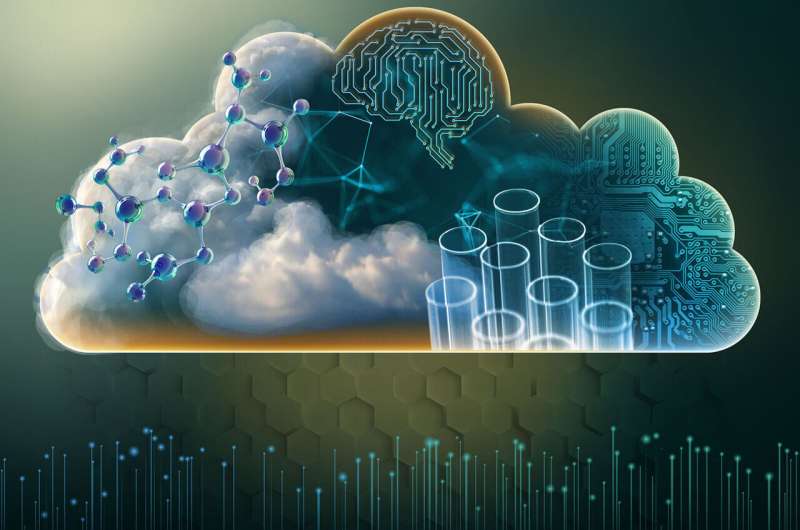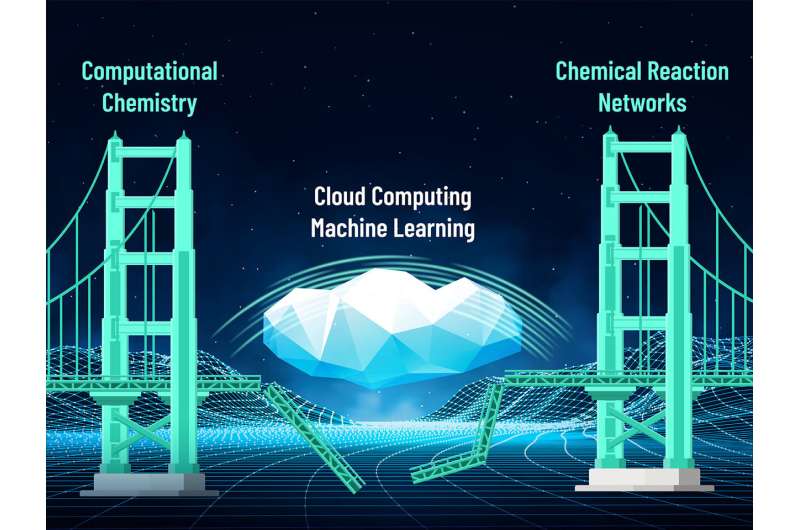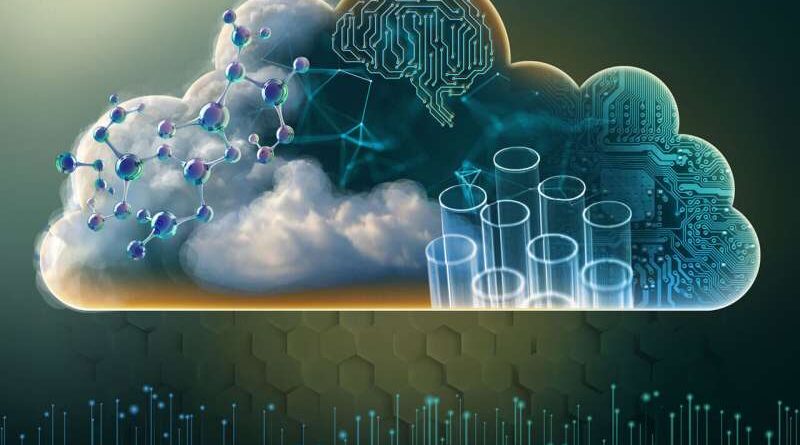Cloud computing captures the chemistry code, which provides the opportunity to deal with urgent energy needs

The Transferring Exascale Computational Chemistry to Cloud Computing Environment and Emerging Hardware Technologies (TEC4) project accelerates the transition of electronic modeling techniques to mass use in cloud computing environments. Credit: Nathan Johnson, Pacific Northwest National Laboratory
Some computing challenges are so large that they all need to be covered. It is a method that a group of different scientists and computer experts led by the Department of Energy Pacific Northwest National Laboratory, as well as colleagues from Microsoft and other national laboratories and universities. democratizing access to emerging cloud computing resources.
Effort, explained inside Journal of Chemical Physicsprovides a road map for moving computer science resources to a sustainable ecosystem that evolves as technology advances. The research team has shown that cloud computing provides a quick, easy addition to the powerful leadership tools that have been the workhorses of science for decades.
“This is a completely new paradigm for scientific computing,” said PNNL chemist Karol Kowalski, who led the computational effort.
“We have shown that it is possible to bundle software as a service with cloud computing resources. This first demonstration of evidence shows that cloud computing can provide options to complement and complement high-performance computing for of solving complex scientific problems.”
Cloud-based software
The cloud has moved beyond storage for photos and documents. The computer industry has moved to provide computing as a service to financial and pharmaceutical companies, among other industries. At this stage, the research team is focused on running the most powerful algorithms in the cloud that are used to find the possibility of being able to produce new chemicals intended for industry, advanced polymers , surface crops and many other applications.
This step, called Transferring Exascale Computational Chemistry to Cloud Computing Environment and Emerging Hardware Technologies (TEC).4), is buildingfrom inside the chemical community to computer systems for users, recognizing the need to continue to evolve software to achieve scientific needs and material evolution.
In their visual journal, the group provides information and technical details on the performance of legacy computer algorithms, such as the popular NWChem software originally developed at PNNL, and the latest software designed for using advanced graphics processing unit (GPU) architectures.
Their results showed that the speed and efficiency of cloud computing opens the door to completing advanced computational chemistry tasks in days instead of months.
“Microsoft’s mission is to empower the scientific community to accelerate scientific discovery,” said Nathan Baker, product lead for Microsoft’s Azure Quantum Elements. “This collaboration with PNNL is a great example of how modern AI can be [artificial intelligence] and HPC tools can advance computational chemistry.”
Filling the urgent need for energy solutions
Over the past decade, computational chemistry has demonstrated its ability to not only solve complex scientific challenges but also guide and interpret experiments, and ultimately enable predictions. These increasingly complex challenges are best served by the resources available at DOE’s computer leadership centers, especially the computing capabilities.

Cloud computing for chemistry. Credit: Nathan Johnson, Pacific Northwest National Laboratory
As tools and methods have advanced, so has the time and cost of arriving at a solution. Leadership team at TEC4 noted that cloud computing and industry collaboration have provided access to computing resources for many different types of problem solving.
For example, the team used Microsoft Azure and advanced workflows to investigate the molecular dynamics of complex chemistry problems. These simulations are important in studying complex reactions that are difficult to observe experimentally.
This powerful tool, used to investigate molecular interactions at the atomic level, requires significant integration resources due to its complexity. Here, the research team has shown a path towards the manipulation of perfluorooctanoic acid which pollutes the environment. It is an example of how computational chemistry can be used to design real-world environmental remediation strategies.
“We envision application environments from low-level to high-end tasks that take advantage of GPU-based computing that is widely used for artificial intelligence and machine learning applications, ” said Kowalski.
“We want to allow users to take advantage of different computing features, pay only for what is needed and integrate the software with the computing experience. This is the first step towards that future state.”
The cloud computing ecosystem
The team is recruiting new developers on the development side and on the user side to create a user base to test the new cloud environment.
“We’re building a family of codes,” Kowalski added. “The goal is to build a community around this effort.”
In accordance with those principles, the group describes its plan to train a group of students who know how to use these tools and will help fill the need for scientists who can run computer systems in the future. The collaboration led to a new course being offered at the University of Texas at El Paso, with Central Michigan University and PNNL as partners beginning in fall 2024.
Additional information:
Examples of electronic architecture in a cloud computing environment, Journal of Chemical Physics (2024). DOI: 10.1063/5.0226437
Provided by the Pacific Northwest National Laboratory
Excerpt: Cloud computing captures the chemical code, providing the opportunity to deal with urgent energy needs (2024, October 21) retrieved on October 21, 2024 from https://techxplore.com/ news/2024-10-cloud-captures-chemistry-code-potential.html
This document is subject to copyright. Except for any legitimate activity for the purpose of private study or research, no part may be reproduced without written permission. Content is provided for informational purposes only.
#Cloud #computing #captures #chemistry #code #opportunity #deal #urgent #energy
